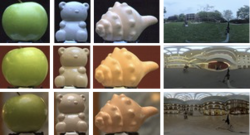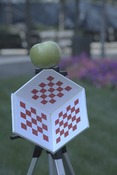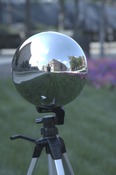Objects Under Natural Illumination Database
Objects Under Natural Illumination Database
Kyoto University Computer Vision Lab

About the Database
The database contains six objects taken under five natural illumination environments with calibrated ground-truth geometry and illumination. Each picture is taken with three exposures and combined into a single high dynamic-range image. Calibration targets are used to align the range scans to the hdr images.
Please cite either of these references in your paper when this database is used for your research.
-
Reflectance and Natural Illumination from a Single Image
S. Lombardi and K. Nishino,
in Proc. of European Conference on Computer Vision ECCV’12, Part VI, pp582-595, Oct., 2012.
[ paper ][ database ][ code ][ project ] -
Shape and Reflectance from Natural Illumination
G. Oxholm and K. Nishino,
in Proc. of European Conference on Computer Vision ECCV’12, Part I, pp528-541, Oct., 2012.
[ paper ][ database ][ project ]
File Layout
- ${environment}/
- ${environment}.exr – illumination environment
- ${object}/
- ${object}_full.exr – camera image (original size)
- ${object}_m_full.png – object mask (original size)
- ${object}_n_full.npy – surface normals (original size)
- ${object}_small.exr – camera image (small size)
- ${object}_m_small.png – object mask (small size)
- ${object}_n_small.npy – surface normals (small size)
The content is laid out into five subdirectories – one per illumination environment. Within each subdirectory is a high dynamic-range image (EXR file format) that contains a spherical panorama of that illumination environment (latlong format), as well as six directories – one for each object. Within each object subdirectory is a high dynamic-range image of the object (EXR file format), a mask file indicating the portion of the image that contains the object, and a binary file containing the surface normals. The surface normals are stored as a NumPy array (NPY file format) and can be opened using the NumPy library for Python.
Image Capture

Objects are fixed to calibration targets to properly align the geometry.

Illumination environments are captured with a chrome sphere.
All images were captured with a Canon EOS 5D Mark II camera. For each object, three raw image files were taken with different exposures and combined into a single HDR image. Each object is also scanned with a laser-stripe range scanner to capture its geometry. Affixed to each object is a calibration target which is used to transform the scanned geometry into the camera coordinate frame.
The illumination environments were captured by photographing a chrome sphere (using three exposures as before). The images are then unwrapped into a spherical panorama.
